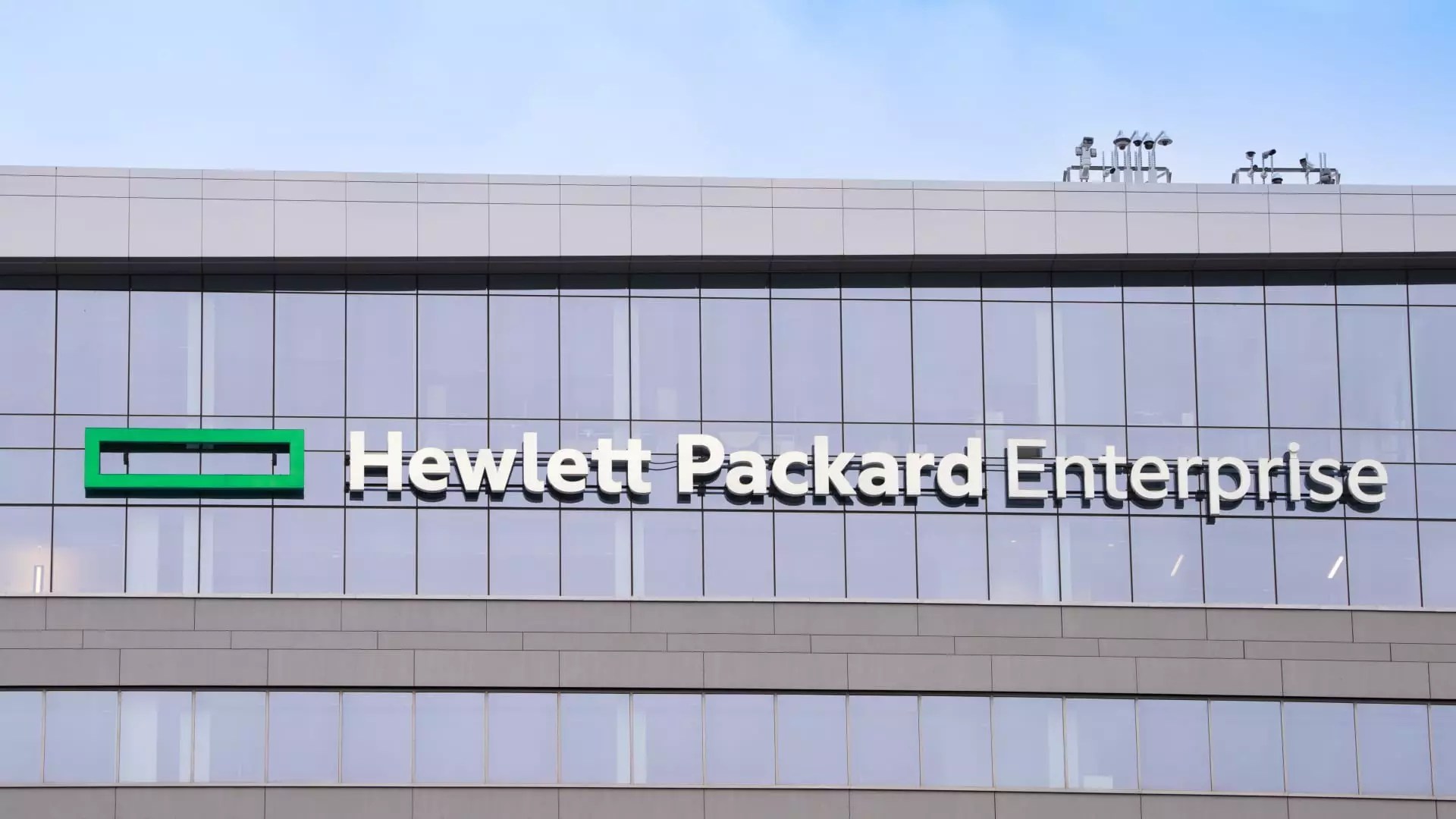The recent plunge of 17% in Hewlett Packard Enterprise’s (HPE) shares serves as a stark reminder of how quickly fortunes can change in the market. The company’s weak guidance for its fiscal second quarter — estimating adjusted earnings significantly below analyst expectations — raises a red flag for investors. With projected earnings of only 28 to 34 cents per share against forecasts of 50 cents, it’s clear that HPE is facing operational challenges. This forecast, coupled with the announcement of a cost-cutting program that includes layoffs, paints a grim picture of uncertainty at a time when stability is crucial.
When a company resorts to layoffs, it signals deeper issues than mere miscalculations. This action suggests a possible lack of strategic direction. Investors should approach HPE with caution, questioning whether these issues are symptomatic of a larger malaise within the firm or just temporary turbulence.
Gap Inc.: A Bright Spot amid the Dark Clouds
In stark contrast, Gap Inc. demonstrated resilience in the current marketplace. A staggering 15% surge in shares following their announcement of better-than-expected earnings confirms the potential for substantial recovery in retail. With earnings at 54 cents per share against an analyst expectation of just 37 cents, Gap is defying the narrative of doom that has haunted much of the retail sector. This triumph underscores that effective management and a keen understanding of market demand can yield impressive results, even in a challenging economic landscape.
The increase in same-store sales by 3% further distinguishes Gap as a potential leader in retail to watch, indicating that consumer preference may still be navigating towards experiential shopping rather than e-commerce alone.
Samsara: The Growing Pain of the IoT Sector
Samsara’s 4% decline points to a troubling reality for companies operating in the industrial Internet of Things (IoT) sector. While their first-quarter guidance met expectations, it reveals a concerning stagnation in growth. As the industry evolves, expectations for explosive growth are overshadowed by reality; modest projections imply that even established players are struggling to gain footholds in increasingly competitive markets. For investors, this means that while Samsara has its strengths, the overarching narrative of tech exuberance may not be universally applicable.
Spotlight on Major Players: Broadcom and Beyond
Broadcom’s impressive 17% increase following favorable fiscal results serves as both an inspiration and a stark reminder of the sharp divisions in stock performance. With guidance suggesting revenue far exceeding expert forecasts, Broadcom has adopted a posture that signals robust health in the semiconductor space. This success, juxtaposed with firms like HPE and BigBear.ai, amplifies the need for a holistic view of the tech sector, where some companies thrive while others falter.
BigBear.ai’s over 12% decline is particularly concerning as it indicates vulnerability to external factors like federal contract disruptions. For an emerging tech company, this could be a substantial setback that emphasizes the volatile nature of this tech-dominated era.
Investing in Uncertainty: The Takeaway
The market’s erratic behavior reflects broader economic uncertainties that both investors and companies must navigate. With Walgreens Boots Alliance’s shares briefly spiking due to intriguing privatization rumors, it’s apparent that strategic maneuvers can momentarily buoy stock performance. However, they may also lead to inconsistencies that confuse or mislead investors seeking long-term stability.
The current landscape illustrates that volatility is ingrained in the market’s DNA. Investors should remain discerning, focusing not just on growth but on sustainability, as we explore this unpredictable financial terrain together.


Leave a Reply